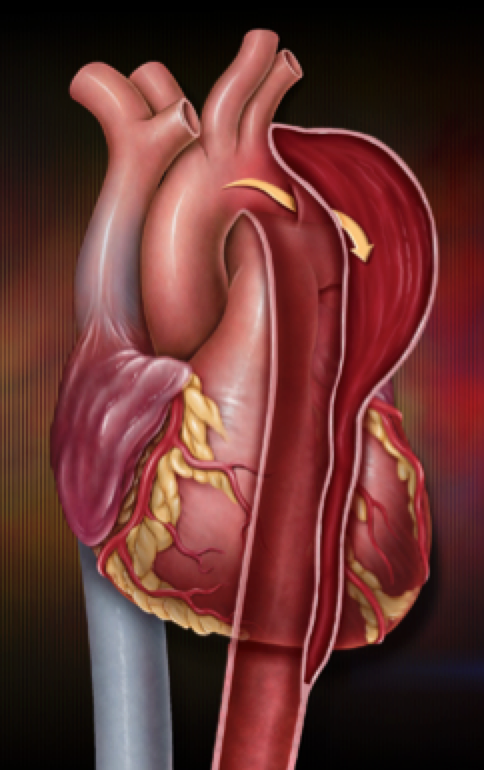Aortic Dissections are Like Snowflakes
Aortic dissections are sudden, violent and often catastrophic events. Aortic dissections involve a tear of the innermost layer (lining) of the Aortic wall (called the intima). Once this tear occurs, flowing blood creates a channel which twists and winds behind the intima within the middle layer (media) of the Aortic wall - much like a meandering stream finding its way through an uneven terrain. As the new blood channel separates the layers of the Aortic wall, the integrity of the Aortic wall weakens. What this means is that with each pulsation, the chances of the Aorta completely giving way and rupturing are increased. If the Aorta ruptures, the hemorrhage his a likelihood of causing death. This is a true emergency.

The reason that Aortic dissections are like snowflakes is that each dissection is unique and no two dissection patients are the same. The location and size of the tear, the channel within the aortic wall and the extent of the tear are all unpredictable. As a result, each patient with an Aortic dissection must be evaluated and treated in a customized fashion.
With blood flowing in two separate channels (called double barrel), there is a nomenclature to differentiate the two channels. The “true lumen” is the channel that corresponds to the space where blood was flowing in the normal aorta before the tear. The “false lumen” designates that space within the Aortic wall where blood is flowing in a brand new channel. The false lumen also contributes to the overall weakness of the aortic wall.
Aortic dissections are typically classified according to the Stanford Classification system which separates patients into two groups based on the location of the initiating (entry) tear. If the entry tear begins in the ascending Aorta, we call this a Type A aortic dissection. A Type B Aortic dissection implies that the entry tear of the dissection begins in the descending thoracic aorta beyond the origin of the left subclavian artery (blood vessel supplying the left arm). Type A aortic dissections, as we will discuss later, require immediate, emergent open heart surgery, while Type B Aortic dissections are frequently managed with medical therapy. This paradigm is changing due to the development of endovascular aortic stent-grafts (as we will discuss in future posts).
Finally, there are other consequences that can occur from the tear. Patients usually develop intense back pain between the shoulder blades. Additionally, the flap of intimal tissue (called the septum) can occlude flow to a branch vessel of the Aorta. If this occurs, the organ(s) which the vessel supplies could lack adequate blood flow. This is called “malperfusion” and is an emergency. The longer the malperfusion persists, the increased risk for death.
There is so much more interesting information to share about this fascinating, yet tragic, disease. We will be exploring this disease in greter detail, including risk factors, treatments and new research studies. Just remember, Aortic dissections are all unique and can progress and change without warning.
Was this post informative?
Subscribe to my newsletter to learn more about the aorta, its diseases, and how to treat them.
Comments
Share your thoughts below — I try to get back to as many comments as possible.